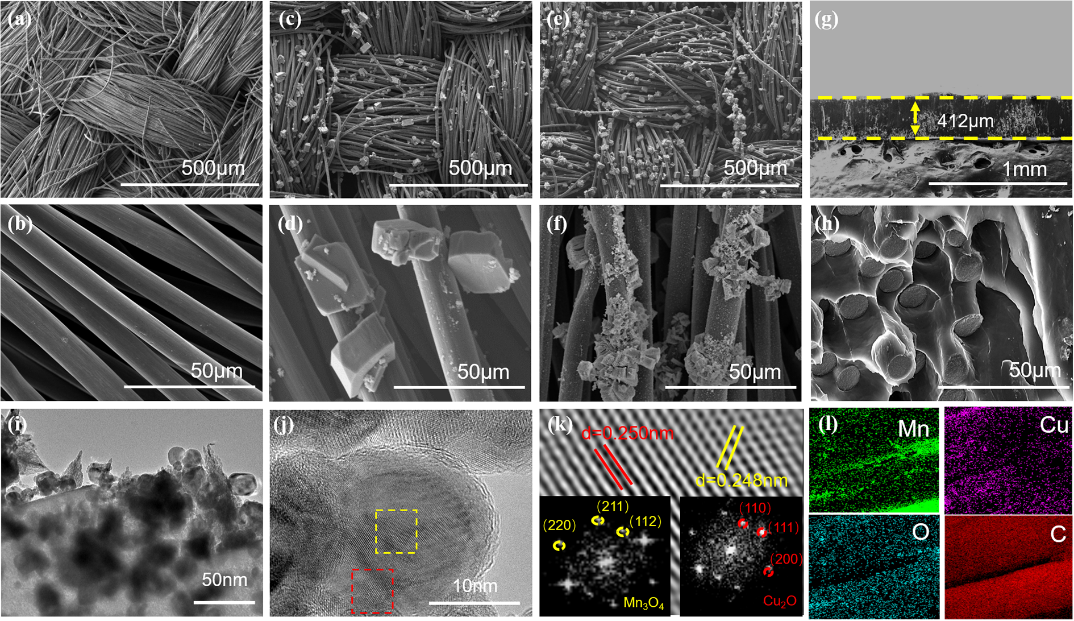论文简介如下:
Recently, three-dimensional (3D) conductive frameworks have been chosen as the host for composite lithium (Li) metal anode because of their exceptional electrical conductivity, remarkable thermal and electrochemical stability. However, Li tends to accumulate on the top of the 3D frameworks with homogenous lithiophilicity and Li dendrite still growth. This work firstly designed a bimetallic MOF (CuMn-MOF) derived Cu2O and Mn3O4 nanoparticles decorated carbon cloth (CC) substrates (CC@Cu2O/Mn3O4) to fabricate a composite Li anode. Thanks to the synergistic effects of lithiophilic Cu2O and Mn3O4, the CC@Cu2O/Mn3O4@Li symmetrical cell can afford a prolonged cycling lifespan (1400 h) under an ultrahigh current density and areal capacity (6 mA cm-2/6 mAh cm-2). When coupled with the LiFePO4 (LFP) cathode, the LFP||CC@Cu2O/Mn3O4@Li full cell demonstrated a superior performance of 89.7 mAh g-1 even at an extremely high current density (10 C). Furthermore, it can also be matched well with LiNi0.5Co0.2Mn0.3O2 (NCM523) cathode. Importantly, to explain the excellent performances of the CC@Cu2O/Mn3O4@Li composite anode, an intermittent model was also proposed. This study offers a novel model that can enhance our comprehension of the Li deposition behavior and pave the way to attain stable and safe Li metal anodes by employing bimetallic MOF-derived materials to construct 3D frameworks.

全文下载:https://doi.org/10.1007/s12274-023-6187-8

